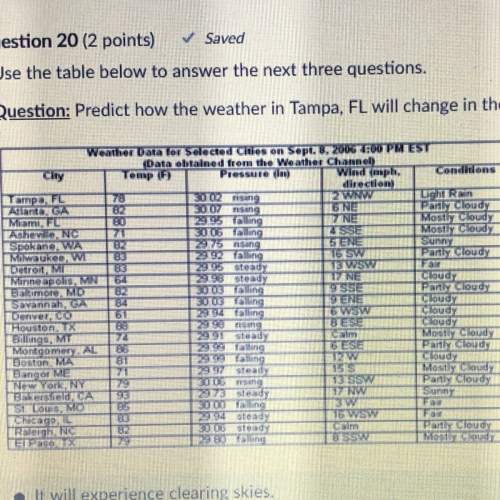
Physics, 11.03.2020 23:11 madisella021
Objects in elliptical orbits sweep out equal areas in equal times. This implies that the orbital speed of planet around sun is not uniform. It moves fastest at the point closest to the sun (known as the perihelion) and slowest at the point farthest away (known as aphelion). In this problem, we will calculate the difference in this speed using Pluto as an example. Pluto's orbit has an eccentricity e = 0.25. Its semi-major axis is 5.9 times 10^9 km. Determine the distance (D_aphelion) between Pluto and the sun at aphelion. You should be able to determine this using just the semi-major axis and the eccentricity. Determine the distance (D_perihelion) between Pluto and the sun at perihelion. Again, you should be able to determine this using just the semi-major axis and the eccentricity. We now want to determine the ratio between Pluto's velocity at aphelion and perihelion: v_aphelion/v_perihelion. To do this you need to find the area swept out by Pluto's orbit. This can be approximately described as a triangle with: Area = 1/2 D v_i where D is the distance from the Sun. v is velocity, and t is time. Remember that Kepler's Second Law essentially states that planets sweep out "equal areas in equal times". This means that the area swept out in some fixed time interval (Delta t) is the same at perihelion as it is at aphelion. Therefore we can say: 1/2 D_perihelion v_perihelion Delta l = 1/2 D_aphelion v_aphelion Delta l Using Equation (2), derive an expression for v_aphelion/v_perihelion. Given that Pluto's minimum orbital velocity is 3.7 km s^-1, determine values for v_aphelion, and v_perihelion.

Answers: 1
Another question on Physics

Physics, 21.06.2019 23:30
Around faucet handle is part of a(n) a. lever b. screw c. inclined plane d. wheel and axle
Answers: 1

Physics, 22.06.2019 09:00
In the first law of thermodynamics, triangle e=q-w, what does q stand for
Answers: 1

Physics, 22.06.2019 11:30
Balloon a has charge q, and identical mass balloon b has charge 10q. you hang them from threads near each other. choose all of the statements with which you agree. check all that apply. a. a and b exert the same magnitude forces on each other. b. the force that a exerts on b is 10 times the force that b exerts on a. c. the angle between the thread supporting a and the vertical is < the angle between the thread supporting b and the vertical. d. the force that a exerts on b is 1/10 the force that b exerts on a.
Answers: 2

You know the right answer?
Objects in elliptical orbits sweep out equal areas in equal times. This implies that the orbital spe...
Questions


Mathematics, 24.01.2020 02:31

Mathematics, 24.01.2020 02:31

Mathematics, 24.01.2020 02:31

Mathematics, 24.01.2020 02:31


Mathematics, 24.01.2020 02:31

Mathematics, 24.01.2020 02:31





Mathematics, 24.01.2020 02:31


Mathematics, 24.01.2020 02:31


Mathematics, 24.01.2020 02:31

Mathematics, 24.01.2020 02:31

Social Studies, 24.01.2020 02:31

Mathematics, 24.01.2020 02:31




